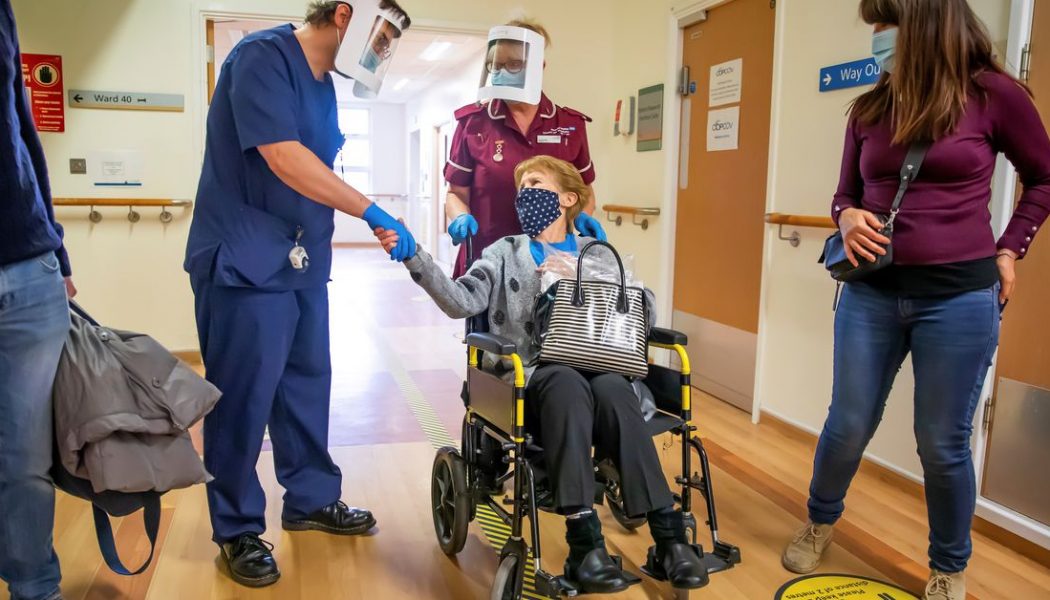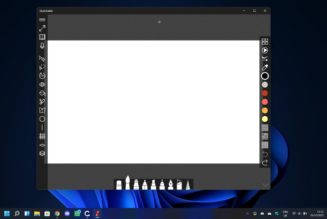
When researchers at pharmaceutical companies around the world started developing COVID-19 vaccines, experts reminded everyone to temper expectations. Vaccines usually take years. The frontrunners were made using unproven technology, and there were dozens of ways things could go wrong. The Food and Drug Administration said it would be fine with anything over 50 percent effective.
Then, last month, Pfizer announced that it had a vaccine, and it was 95 percent effective. Moderna did too. It was better news than anyone dared hope for. Stéphane Bancel, chief executive at Moderna, said he cried when he first heard the data. With the FDA’s blessing, which came in late Friday night, health care workers in the United States could start getting shots next week, less than a year after the first case of COVID-19 was documented in the country.
Scientists pulled off the impossible thing, and that’s worth celebrating. It is a remarkable, awe-inspiring achievement. I would say it’s miraculous, but calling it a miracle takes away from the work that went into making it possible — both over the past few months, and during the years of basic research on coronaviruses and gene-based vaccines.
We’re celebrating as much as we are because we need this vaccine to turn the tide of the pandemic. But there’s a sad backstory to this party. We only need this vaccine so desperately because the United States failed at doing the hard, basic public health work. Providing contact tracing, ample testing, masks, gloves, and clear policies aren’t as exciting as the moonshot of a vaccine, but if the US government had done them well, the country wouldn’t have been so reliant on the impossible.
We’re lucky that the moonshot paid off. There was always a chance it wasn’t going to work, and some vaccines have hit serious roadblocks. On Friday, the drug company Sanofi announced a setback — it can’t start late-stage clinical trials this month, as planned, and its vaccine won’t be ready until the second half of 2021. There’s a world where Pfizer and Moderna hit snags, too, or where they didn’t work quite as well.
Even though they did work, the development of these vaccines took nearly a year. In that year, hundreds of thousands of people in the US died. They didn’t have to. Public health measures are designed to slow the spread of the virus — saving lives, and buying scientists time to develop life-saving vaccines. Doing the hard work would have made it so more people could have survived to benefit from them.
Instead, we’re getting a vaccine just as COVID-19 is surging out of control across the country. Writing in The Atlantic, Juliette Kayyem, former assistant secretary in the Department of Homeland Security, said that the rest of the pandemic would unfold on a split screen. On one side, continuous death and disease. On the other, the start of a vaccination campaign that could keep people safe from the virus. Thursday, an independent committee recommended that the FDA authorize the Pfizer and BioNTech COVID-19 vaccine. That same day, over 3,000 people in the US died from the disease.
Here in the US, we’re counting down the days before vaccines are widely available, knowing that every day of delay means more illness and more death. That’s not true everywhere. My dad recently told me that he had a meeting with some people living in Australia, and that he asked them what they thought of the vaccine news. Turns out, they didn’t really care. Australia controlled the pandemic so well that life is essentially normal — it doesn’t need a vaccine as an escape hatch. They did the hard thing, so they didn’t have to rely on the impossible.
—Nicole Wetsman
Here’s what else happened this week.
Research
Boston biotech conference led to 245,000 Covid-19 cases across US, genetic fingerprinting shows
A Biogen conference in Boston in February was already known to be a superspreader event. But a new study that looks at genetic samples of the virus shows just how bad the aftermath of that event really was. (Maggie Fox, CNN)
Development
COVID-19 vaccine starts working within two weeks after first shot
Documents published by the FDA offered a more detailed window into how the Pfizer/BioNTech vaccine worked. One key finding: the first shot of the vaccine did seem to provide some protection from the virus. (Nicole Wetsman, The Verge)
Australia Scraps Covid-19 Vaccine That Produced H.I.V. False Positives
Australia canceled its order for an Australian-made vaccine this week. The problem wasn’t that the vaccine didn’t work — it probably did. But it worked by using fragments from a protein found in HIV. Unfortunately, HIV tests were sensitive enough to pick up the antibodies created by the body after patients got the vaccine, resulting in false positives on HIV tests. (Mike Ives/ The New York Times)
New smartphone tool to track side effects of the coronavirus vaccine may be vulnerable to manipulation
Experts sounded an early alarm about a tool the CDC plans to use to track side effects of the coronavirus vaccine. They worry it could be easily manipulated. (Lena H. Sun and Isaac Stanley-Becker, The Washington Post)
On the ground, the pledge to vaccinate 20 million against Covid-19 in December seems unrealistic
There’s not that much time left in the year, and a whole lot of vaccinations left to distribute. The US’ lofty goals may not be met by New Years’ Eve. (Olivia Goldhill, STAT)
Blunders Eroded U.S. Confidence in Early Vaccine Front-Runner
This is an epic saga of how one promising vaccine candidate made by Oxford and AstraZeneca stumbled badly, pushing it behind candidates produced by competitors Moderna and Pfizer/BioNTech. (Rebecca Robbins, Sharon LaFraniere, Noah Weiland, David D. Kirkpatrick and Benjamin Mueller, New York Times)
Two in U.K. Suffer Allergic Reaction to Pfizer’s Covid-19 Vaccine
As the FDA met to consider whether or not to approve the Pfizer/BioNTech vaccine, regulators in the UK announced that two people had suffered allergic reactions to the vaccine. The regulators said that people with histories of severe allergic reactions should not receive the vaccine. (Joanna Sugden and Bojan Pancevski, The Wall Street Journal)
Sanofi suffers major setback in development of a Covid-19 vaccine
Sanofi’s vaccine trial faces a major delay after they discovered that trial participants had been given doses that weren’t strong enough. The setback delays the vaccine’s potential deployment by months. (Helen Branswell/STAT)
Perspectives
I push medications to sedate and paralyze them, and then put a tube through their vocal cords. Looking down at them as they go to sleep, I’m the last person they see. And for the ones who don’t survive, I will have been the only one to hear—or rather, not hear—their last words.
—Anesthesiologist Kasey Grewe writes for The Atlantic about the grim reality of working in New York hospitals during the spring surge.
When Smith’s colleagues couldn’t fit a massive piece of equipment through a door at the company’s headquarters one summer weekend, rather than wait until Monday to submit a work order to facilities, they found a sledgehammer and knocked down the wall themselves.
— James D Walsh writes about one scientist’s experience working on the Moderna vaccine in Intelligencer.
More than Numbers
To the more than 70,074,860 people worldwide who have tested positive, may your road to recovery be smooth.
To the families and friends of the 1,590,998 people who have died worldwide — 294,320 of those in the US — your loved ones are not forgotten.
Stay safe, everyone










